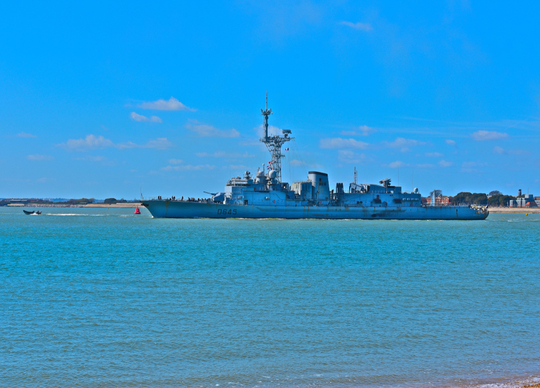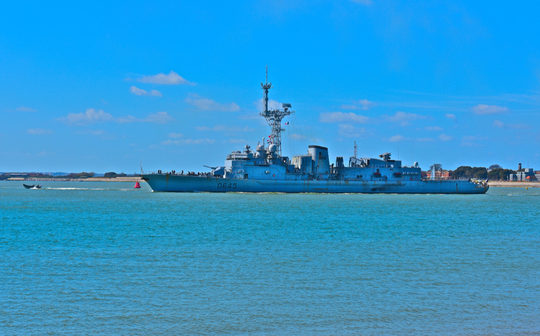
By Staff Writer.
BAE Systems Maritime Australia is gearing up to begin building nine Hunter Class anti-submarine warfare frigates from 2024. The multi-billion-dollar program will support Australia’s maritime warfighting to 2070 and beyond.
Speaking at an industry briefing at Indo-Pacific 2022 in Sydney on Thursday, the Department of Defence’s Director General of Ship Acquisition (Surface Combatants), Commodore Scott Lockey, said he was the person responsible for the delivery of the Hunter Class mission and support systems.
“In conjunction with our prime, BAE Systems Maritime Australia, we will deliver to the Royal Australian Navy nine state of the art general purpose frigates that have been optimised for anti-submarine warfare,” he said.
The vessels are based on BAE Systems’ Type 26 Global Combat sip design, a bow-to-stern digitally designed anti-submarine warfare frigate being built for the British, Canadian, and Australian navies.
With a 7,000 nautical mile cruising range, the diesel-electric vessels will have a top cruising speed exceeding 27 knots. The frigates will play vital roles in anti-submarine warfare, air defence, surface warfare, interdiction, surveillance and intelligence collection, and humanitarian assistance and disaster relief.
“The Hunter Class frigate program will form the foundation of continuous naval shipbuilding in Australia. It will play a critical role in establishing a sovereign design, manufacturing, and sustainment capability that will serve this nation for decades to come,” said Commodore Lockey.
“We will commence production of the first vessel at Osborne in June 2024. The acquisition phase of the project will take us through until 2044, when we will deliver the ninth ship to the Royal Australian Navy. Based on a nominal 25-to-30-year life of type – and potentially longer if the ANZAC Class frigate is anything to go by, that will take our fleet out to 2070 and beyond.”
Commodore Lockey said the program was currently in the design and production ideation phase. Work is underway to finalise the detailed design of the frigates and the settings to work with the Osborne Naval Shipyard – the vessels’ manufacturing site.
“We’re conducting initial prototyping of five shipping blocks in a Type 26 configuration. Commencing in May next year, we will commence prototyping for the enhanced prototype in blocks for a Hunter Class configuration, and those four blocks will be used in one of the first three batch line vessels.”
Three batches of three Hunter Class frigates will be built over the next two decades using BAE’s Type 26 as a reference vessel. The platform will be tailored to incorporate Australian Government mandated systems, particularly around combat systems.
Those combat systems will include MU90 torpedos, an Mk45 modified 4 5″ gun, SM2 and ESSM missiles, advanced anti-ship missiles, an Mk41 vertical launch system, two 30mm short-range guns, two 20mm close-in weapons systems, and the Nulka decoy system.
“The next half a decade will provide immense opportunity to increase the sovereign content of the products in the vessels and the support system and the sovereign capability in our industrial base providing the design, manufacturing, and sustainment services,” said Commodore Lockey.
“Design production ideation involves establishing a supply chain, design of the support system, and finalisation of the schedule and cost to produce the first batch of three ships, which we will then need to take back to the Government early in 2024 for approval.”
Both Commodore Lockey and BAE officials told the packed industry briefing ample opportunities exist for qualified Australian suppliers to grab a slice of the $35 billion-plus frigate program. He said one of the key objectives of the Hunter Class frigate program is not just building warships but also maximising Australian industry capability.
“I expect to see great Australian industry content as we commence production and even greater content as we roll into the batch two vessels and then the batch three vessels,” he said.
But Commodore Lockey did call for patience. He says the frigate program is still in its early stages, including sorting out the supply chain, defining the support system, and finalising those detailed designs. With a 20-year timeframe for the build looming, the program’s Director General argues there is time for suppliers, the Royal Australian Navy, and BAE Systems to deliver the best possible warship.
“We have to step through a systematic and logical design process to ensure that we get it right.”






